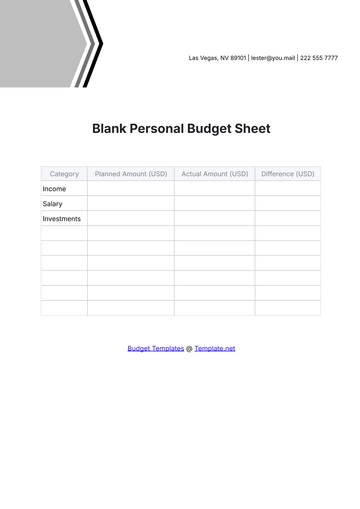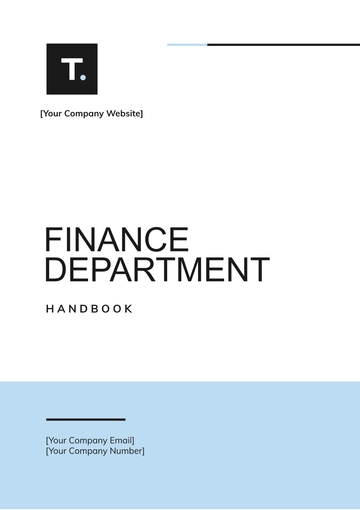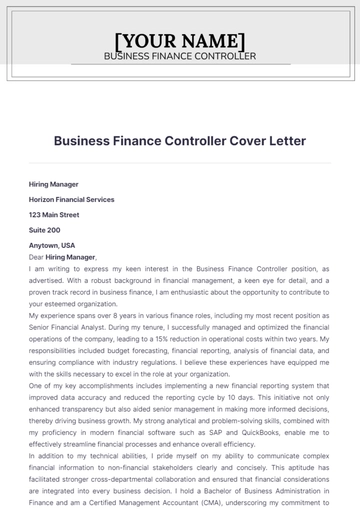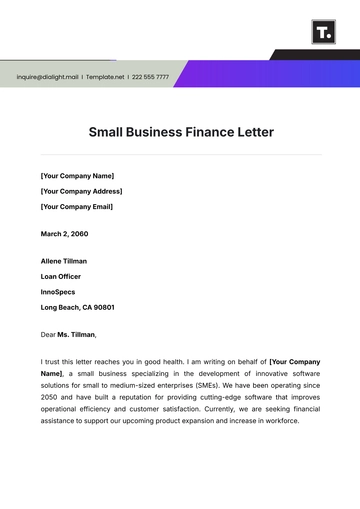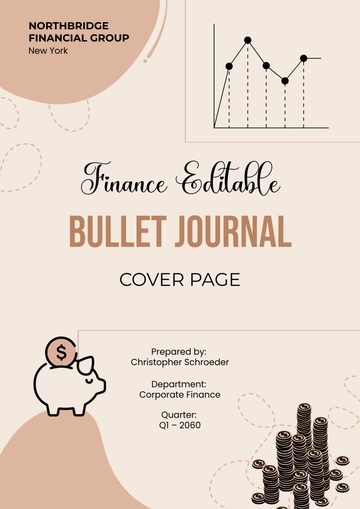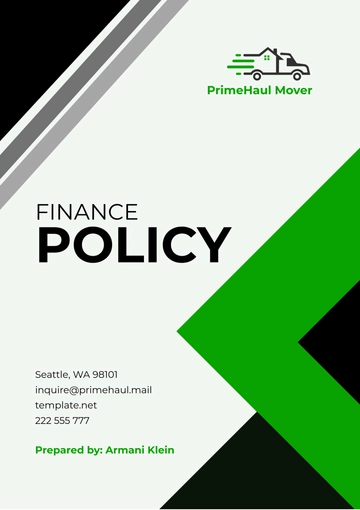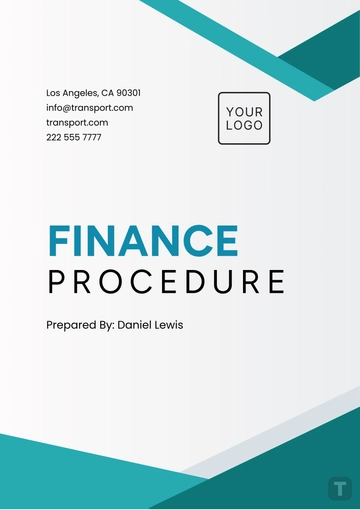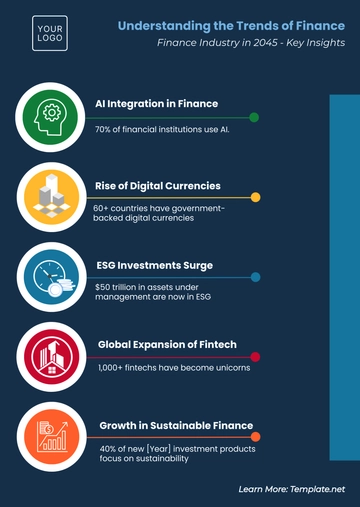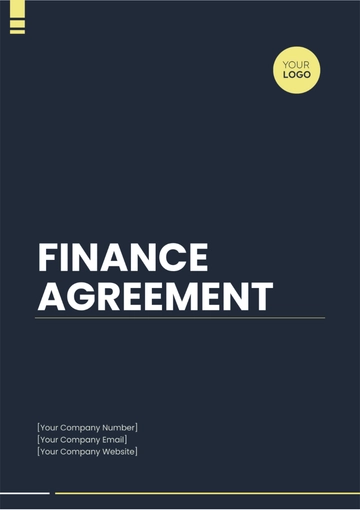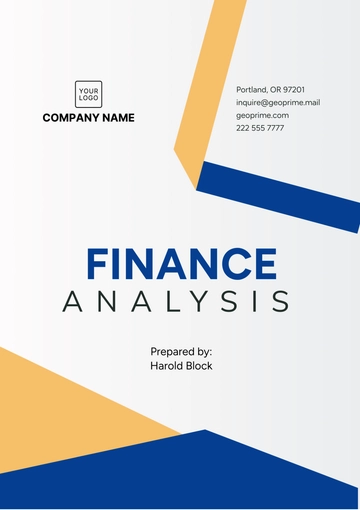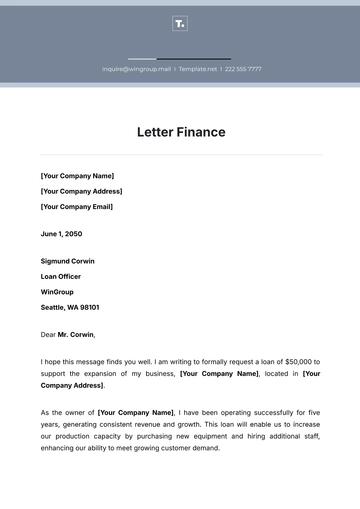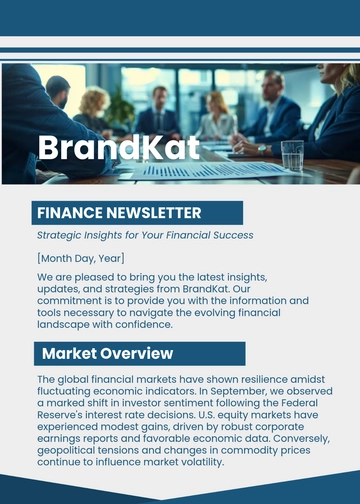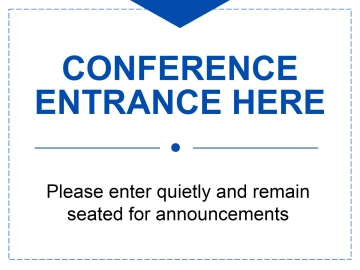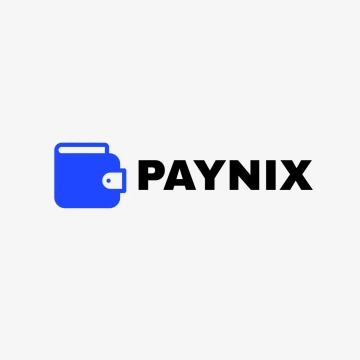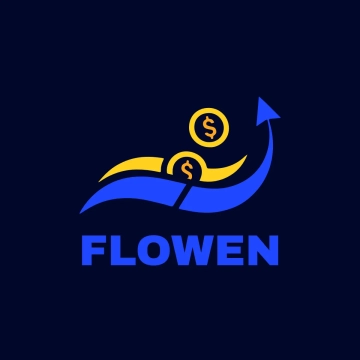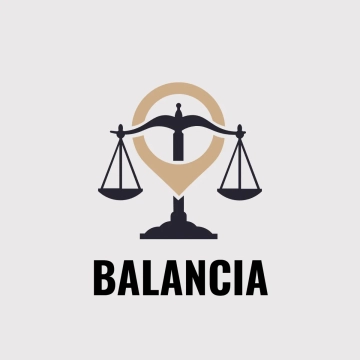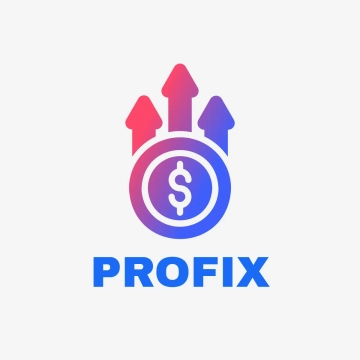Free Finance Strategic Audit Document

Executive Summary
This Strategic Audit Document presents a comprehensive review of [Your Company]'s Finance Department, focusing on Finance Audit and Internal Controls. The audit was conducted to evaluate the current financial standing, assess the efficiency and effectiveness of internal controls, and provide strategic insights for financial improvement.
Key findings indicate that [Your Company] maintains a robust financial position with steady revenue growth over the past five years. However, there are areas of concern in budget management and risk assessment. The internal control environment is well-structured but requires enhancements in monitoring activities and information systems.
The recommendations provided aim to fortify the financial foundation, streamline internal processes, and improve overall financial governance. This document serves as a strategic guide for the Finance Department to enhance financial performance and internal control systems.
Introduction
Objectives of the Strategic Audit
The primary objectives of this strategic audit are to:
Evaluate the financial performance and position of [Your Company].
Assess the effectiveness and efficiency of the internal control systems.
Identify potential areas of risk and non-compliance.
Provide actionable recommendations for financial improvement and control optimization.
Scope and Limitations
The audit covers financial data from the past five years, focusing on the company’s internal control mechanisms, financial reporting, compliance, and risk management. Limitations include the exclusion of external market factors and the reliance on historical financial data, which may not fully predict future trends.
Methodology
The audit methodology encompassed a mix of quantitative and qualitative analyses, including:
Detailed review of financial statements and reports.
Interviews with key management personnel and staff.
Examination of internal control procedures and compliance records.
Comparative analysis with industry benchmarks and standards.
Company Overview
[Your Company], founded in 1998, has established itself as a leader in the technology sector, specializing in advanced software solutions. The company has experienced consistent growth, attributed to its innovative products and strong market presence. As of the last fiscal year, [Your Company] reported a revenue increase of 10%, maintaining a steady upward trajectory in financial performance.
The organizational structure is headed by a CEO, with various departments including Sales, Research and Development, Human Resources, and Finance. The Finance Department, critical to the company’s success, is led by a Chief Financial Officer (CFO) and is responsible for financial planning, reporting, and internal controls.
Financial Analysis
Financial Performance Analysis
The financial analysis of [Your Company] over the past five years reveals a pattern of growth and stability. The following table highlights key financial ratios:
Financial Ratio | 2050 | 2051 | 2052 | 2053 | 2054 |
Return on Equity (%) | 15.2 | 16.8 | 17.5 | 18.1 | 19.0 |
Debt-to-Equity Ratio | 0.5 | 0.6 | 0.6 | 0.5 | 0.4 |
Current Ratio | 1.8 | 1.9 | 2.0 | 2.1 | 2.2 |
Net Profit Margin (%) | 12.0 | 12.5 | 13.0 | 13.5 | 14.0 |
These ratios indicate a strong return on equity, improving liquidity, and an efficient management of debt. The net profit margin shows a consistent increase, reflecting effective cost management and profitable operations.
Budget Analysis
The budget analysis focuses on the variances between the projected and actual financial figures. The following table provides an overview of the budget variance for the year 2054:
Budget Item | Projected (in millions) | Actual (in millions) | Variance (in millions) |
Revenue | $150 | $155 | $5 Positive |
Research & Development | $30 | $35 | $5 Negative |
Marketing | $20 | $18 | $2 Positive |
General & Administrative | $25 | $23 | $2 Positive |
The positive variance in revenue indicates better-than-expected performance. However, overspending in Research and Development highlights a need for tighter budget control in this area.
Internal Control Evaluation
The evaluation of [Your Company]’s internal controls is critical to ensuring the integrity and reliability of financial reporting and compliance with laws and regulations.
Control Environment
[Your Company] has established a strong control environment, with clear ethical policies and a commitment to integrity at all management levels. The company has defined roles and responsibilities, with a dedicated internal audit team overseeing compliance and control effectiveness.
Risk Assessment Process
A systematic approach is employed for risk assessment, identifying and prioritizing potential risks, including financial, operational, and compliance risks. The company uses the following risk assessment matrix:
Risk Factor | Likelihood | Impact | Mitigation Strategy |
Market Fluctuations | High | Medium | Diversification Strategy |
Regulatory Changes | Medium | High | Compliance Monitoring |
Cybersecurity Threats | High | High | IT Security Enhancements |
Economic Downturn | Low | High | Reserve Funds and Cost Control |
Control Activities
Control activities at [Your Company] include regular financial audits, approval procedures for expenditures, and systematic reviews of operational processes. These activities ensure that directives are carried out and risks are managed effectively.
Information and Communication
Information systems at [Your Company] are designed to support financial reporting and decision-making. However, the audit revealed a need for upgrading these systems to enhance data accuracy and accessibility. Communication channels are effective but require more frequent updates on policy changes and risk management.
Monitoring Activities
Ongoing and separate evaluations are conducted to monitor the effectiveness of internal controls. However, there is a need for more frequent and comprehensive reviews to adapt to the rapidly changing business environment.
Governance and Compliance
[Your Company] adheres to high standards of corporate governance. The Board of Directors includes members with diverse backgrounds and expertise, contributing to effective oversight.
Governance Structures and Practices
The governance framework includes regular board meetings, transparent reporting, and ethical conduct policies. However, the audit suggests enhancing board involvement in strategic planning and risk management.
Compliance with Laws and Regulations
[Your Company] is compliant with all relevant financial and industry regulations. Regular training sessions are conducted to ensure staff awareness and adherence to legal standards. However, the rapidly evolving regulatory landscape necessitates a more proactive approach to compliance management.
SWOT Analysis
The SWOT analysis provides insights into the internal strengths and weaknesses of [Your Company], as well as the external opportunities and threats that could impact its financial performance.
Strengths
Innovative Product Range: [Your Company] leads in product innovation, driving market demand.
Strong Financial Position: Consistent revenue growth and healthy financial ratios.
Skilled Workforce: A highly skilled and motivated workforce drives operational efficiency.
Weaknesses
Dependency on a Few Key Clients: A significant portion of revenue comes from a limited number of clients.
Outdated Information Systems: Current systems are not fully equipped to handle advanced data analytics needs.
Opportunities
Emerging Markets: Expansion into emerging markets presents significant growth opportunities.
Technological Advancements: Investing in new technologies can enhance operational capabilities.
Threats
Competitive Market: Intense competition in the technology sector.
Regulatory Changes: Potential impact of changing regulations on operational compliance.
Recommendations
Based on the audit findings, the following strategic recommendations are proposed to improve [Your Company]’s financial performance and internal controls:
Diversify Client Base: To reduce reliance on a few key clients, [Your Company] should explore new market segments and diversify its client base.
Upgrade Information Systems: Investing in modern information systems will enhance data processing capabilities and support better decision-making.
Enhance Risk Management: Strengthening the risk management framework to include proactive strategies for emerging risks.
Expand into New Markets: Leverage the company's strengths to enter emerging markets, capitalizing on growth opportunities.
Continuous Training for Compliance: Implement ongoing training programs to keep staff updated on regulatory changes and compliance requirements.
Regular Review of Internal Controls: Increase the frequency of internal control reviews to ensure they are effective and adapt to changes in the business environment.
Each recommendation is designed to address specific areas identified in the audit, aiming to bolster [Your Company]'s financial standing and control mechanisms.
Conclusion
The strategic audit of [Your Company]'s Finance Department has provided a thorough examination of the financial performance, internal control systems, and overall financial governance of the company. This document has identified key areas where [Your Company] excels, as well as critical aspects that require attention and improvement.
The financial analysis indicates a robust and growing financial position, underpinned by strong revenue growth and solid financial ratios. However, the budget analysis highlights some areas of overspending, particularly in Research and Development, suggesting a need for more stringent budgetary controls.
In terms of internal controls, while [Your Company] maintains a strong control environment and has effective risk assessment processes in place, there are opportunities for enhancing information systems and monitoring activities. The governance structure of the company is sound, yet a more proactive approach in compliance management and board involvement in strategic planning is recommended.
The SWOT analysis reveals [Your Company]’s significant strengths in innovation and financial stability but also points out vulnerabilities like reliance on a few key clients and outdated information systems. Addressing these weaknesses and capitalizing on identified opportunities will be crucial for maintaining competitive advantage and financial resilience.
The recommendations provided in this document aim to guide [Your Company] in strengthening its financial and operational foundations. Prioritizing the diversification of the client base, upgrading information systems, enhancing risk management, expanding into new markets, continuous compliance training, and regular review of internal controls are key strategies for sustainable growth and success.
In conclusion, while [Your Company] is positioned strongly in its industry, this strategic audit underscores the importance of continuous improvement and adaptation in an ever-evolving business landscape. Implementing the suggested recommendations will not only address current challenges but also pave the way for future opportunities, ensuring [Your Company] remains at the forefront of its sector.
- 100% Customizable, free editor
- Access 1 Million+ Templates, photo’s & graphics
- Download or share as a template
- Click and replace photos, graphics, text, backgrounds
- Resize, crop, AI write & more
- Access advanced editor
Craft a thorough audit strategy with Template.net's Finance Strategic Audit Document Template. Editable and customizable, this document assists in planning and executing strategic financial audits. It's a vital tool for identifying financial risks, evaluating compliance with policies, and offering insights for strategic financial decision-making and organizational growth.
